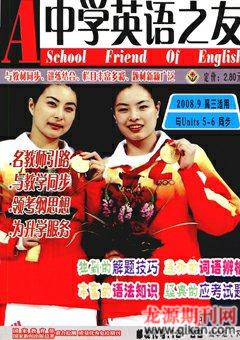复习定语
冯 媛
定语是用来说明名(代)词的品质与特征的词或一组词。
1)可用作定语的有形容词、名词、代词、数词、副词、不定式、动名词、介词、介词短语、从句和句子等。
I have the perfect present for his birthday.
我为他的生日备了最好的礼物。
sports car 跑车
a fools paradise 虚幻的天堂(名词s属格用作定语)
the works of Shakespeare 莎士比亚的作品(名词of属格用作定语)
Your hair needs cutting. 你该理发了。(物主代词用作定语)
Theres only one way to do it.
做此事只有一种方法。(基数词one用作定语)
the factory there 那里的那个工厂
She has a wish to travel round the world.
她有个愿望要周游世界。(不定式短语用作定语)
a walking stick 手杖
a sleeping child 正在睡梦中的小孩(现在分词)
This is a map of China. 这是一幅中国地图。
The car thats parked outside is mine.
停在外面的汽车是我的。(限制性从句)
2)定语的位置一般比较固定。单词用作定语时,多放在其所修饰的名词之前;短语和从句用作定语时,一般皆置于其所修饰的名词之后。但有以下一些情况需要注意:
(1)只可用作表语的形容词用作定语时一般须后置。如:
He spoke like a man afraid. 他说话时像是很害怕似的。
Im the happiest man alive. 我是世上最幸福的人。
(2)以-ble结尾的形容词用作定语时常后置。如:
Please put your idea into the simplest language possible.
请用最简单的语言将你的想法说出来。
(3)常后置的形容词还有present, proper等。如:
All the people present voted for him. 出席的人都投了他的票。
Japan proper excludes the outlying islands.
日本本土不包括周围列岛。
(4)形容词等用作复合不定代词的定语时须后置。如:
I would like to have something interesting to read.
我想找些有趣的东西来读。
3)定语有限制性(restrictive)与非限制(nonrestrictive)之分。对其所修饰的名词来说是必不可少的定语,叫做限制性定语,通常不用逗号将二者隔开;反之,对其所修饰的名词只是一种补充说明,并非必不可少的定语,叫做非限制性定语,二者之间一般皆有逗号。
Do you know the woman who is sitting under the tree?
你认识正坐在树下的那位妇女吗?
York, which I visited last year, is a nice old city.
约克是一座我去年参观过的美丽的古城。

